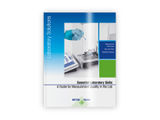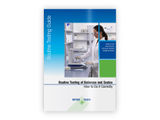To use all functions of this page, please activate cookies in your browser.
my.chemeurope.com
With an accout for my.chemeurope.com you can always see everything at a glance – and you can configure your own website and individual newsletter.
- My watch list
- My saved searches
- My saved topics
- My newsletter
Anti-apolipoprotein antibodies
Additional recommended knowledgeAlso, it was proposed that AAHA is responsible for lupus anticoagulant. However, Antiphospholipid antibodies bind phospholipids at sites similar to sites bound by anti-coagulants such as PAP1 sites and augment anti-coagulation activity[2]. This contrasts with the major, specific, activity of AAHA, defining a subset of anti-cardiolipin antibodies that specifically interacts with Apo-H.[3] AHAA only inhibits the anti-coagulation activity in the presence of Apo-H and the AAHA component of ACLA correlates with a history of freqeunt thrombosis.[4]. This can be contrasted with Lupus anticoagulant which inhibits agglutination in the presence of thrombin. A subset of AHAA appear to mimic the activity of lupus anticoagulant and increase Apo-H binding to phospholipids.[5] These two activities can be differentiated by the binding to Apo-H domains, whereas binding to the 5th domain promotes that anti-coagulant activity binding to the more N-terminal domains promotes lupus anticoagulant-like activities. AAHA interferes with factor Xa inhibition by Apo-H increasing factor Xa generation. However, like Apo-H the Lupus anticoagulant inhibits factor Xa generation.[6] AAHA also inhibited the autoactivation of factor XII [7] while at high AAHA concentrations, factor XIIa activation increases at levels comparable to Apo-H that cause inhibition of factor XIIa activation. A synchronized inhibition of factor XII autoactivation by Apo-H and AHAA has been suggested. GeneticsThe hapolotype HLA-DR4-DQ3 appears to play a role in the pathogenic AAHA production. The alleles primarily recognized are HLA-DR53[8] (DRB4*01), DRB1*0402[9], DQA1*03[10], and possibly DQB1*0302. All of these alleles are in linkage disequilbrium in the DRB4*01:DRB1*0402:DQA1*0301:DQB1*0302 haplotype, also called DR4-DQ8 and also the DQA1:0303:DQB1*0301 haplotype, DR4-DQ7.3. However in European Americans which reflects a broad area of Europe in which the original studies were conducted only DR4(0402)-DQ8 was found, indicating that the entire haplotype is involved.[11] HLA-DR7 may also be associated with these antibodies and the common haplotype association is the HLA-DR53 serotype. References
Categories: Antibodies | Autoantibodies |
||||||||||||||||||||||||||
| This article is licensed under the GNU Free Documentation License. It uses material from the Wikipedia article "Anti-apolipoprotein_antibodies". A list of authors is available in Wikipedia. | ||||||||||||||||||||||||||
- Bromoanisole
- Inexpensive, non-toxic nanofluid could be a game-changer for oil recovery - The nanofluid is made from commercially available sodium using household blender
- Breakthrough in capturing 'hot' CO2 from industrial exhaust - A metal-organic framework is capable of capturing CO2 at extreme temperatures
- Brønsted-Lowry_acid-base_theory
- Beilstein_Journal_of_Organic_Chemistry







